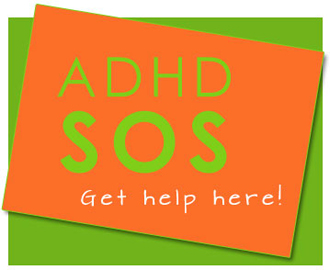Struggling to make a decision because you’re afraid of what might happen next? In this episode, we unpack decision fatigue, inner conflict, and why wanting two things at once isn’t a flaw. Learn a simple 5-step framework to find clarity, create emotional anchors, and make confident choices—even when the outcome depends on someone else.
Topics for the ‘ADHD’ Category
The Rabbit Hole: How to Stop Spiraling Thoughts: Episode 62
Ever find yourself spiraling into overthinking, anxiety, or worst-case scenarios? Like Alice in Alice in Wonderland, one thought can send you tumbling down a mental rabbit hole. But what if you could stop the fall?
In this episode, learn why you spiral, how to press pause, and practical steps to regain control.
Listen now and take back control of your thoughts!
What is a psycho-educational assessment?
What is a Psycho-educational assessment?
A psycho-educational assessment provides estimates of the client’s intellectual, or cognitive, abilities and educational achievement levels. It also yields recommendations relevant for educational planning.
Sources of assessment data include background information, educational history, and records and data from tests of intelligence and educational achievement and, at times, ratings tests of attention, behavior/emotions, and adaptive behavior.
A psycho-educational assessment is designed to answer these questions: Does the client have a learning disability(ies)? Mental retardation? Attention problems? What are the client’s academic and cognitive abilities, strengths, and weaknesses? What are appropriate educational recommendations? Accommodations?
While learning, not emotional problems, is the focus of psycho-educational assessment, behavior/emotional and medical issues may need to be addressed in psycho-educational assessment. Compiling, integrating, and analyzing all assessment data yield educational and other relevant recommendations.
Components of a psycho-educational assessment include:
- Referral question(s)
• Referral source
• Background information
• Assessment procedures
• Relevant test procedures
• Assessment results
• Interpretation of results
• Summary and recommendations
An important part of the psycho-educational assessment is the educational recommendations section. In this section the clinician will make recommendations to help strengthen the areas of weakness. This may include suggestions for accommodations in the academic setting as well as additional support.
Intelligence Tests
Intelligence tests are commonly referred to as IQ tests. The most common IQ tests in current use are the Wechsler intelligence scales and Woodcock-Johnson.
The Wechsler scales yield:
- Full-scale intelligence quotient (IQ): overall, composite measure of intelligence
- Verbal IQ: estimate of verbal comprehension and expression
- Performance IQ: estimate of visual-spatial reasoning.
- In addition, there are supplementary indexes that include measures of Verbal Comprehension, Perceptual Organization, Processing Speed (a measure of information-processing speed), and Working Memory (a measure of short-term memory and attention).
Woodcock Johnson Test also includes supplemental information that includes:
- Auditory processing: discrimination, analysis, and synthesis of auditory stimuli; perception and discrimination of speech sounds despite interfering background noise
- Phonemic awareness: manipulation, analysis, and synthesis of discrete sounds
- Visual processing: (includes visual memory) perception, analysis, and synthesis of visual stimuli; storage and memory of visually presented stimuli; mental manipulation of visual patterns
- Long-term retrieval/memory: storage and retention of information with ability to retrieve it at a later time.
- Short-term memory: processing and holding auditory information in awareness, then manipulating it within a few seconds
- Processing speed: rapid cognitive processing without higher order thinking; attentiveness and fluency of simple information processing
- Verbal reasoning: reasoning and comprehension when using language, verbal expression, vocabulary
- General information/knowledge: acquired knowledge, long-term memory
- Fluid reasoning: inductive and deductive reasoning, problem solving, and concept formation on novel tasks that are nonverbal or limited in language demands
- Quantitative ability: understanding mathematical concepts and relations.
In addition, often implicated in learning disabilities are the areas of auditory processing, phonemic awareness, processing speed, short-term memory, and long-term retrieval. Because traditional IQ tests yield measures of only some of the above abilities, a good psycho-educational assessment should supplement a traditional IQ measure, such as the Wechsler, with additional measures from the Woodcock-Johnson or other batteries.
Educational/Achievement Tests
Educational testing, typically referenced as achievement testing, is an important component of psycho-educational assessment. Assessment of achievement is an important part of assessment to rule out/diagnose learning disabilities and mental retardation. In addition, attention problems are often related to achievement problems. In most cases, poor achievement is what triggers the referral for assessment.
Learning disabilities
Learning disabilities are a pattern of scores representing unevenness in intellectual and academic abilities and skills. While all people have some strengths and weaknesses (e.g., stronger in quantitative than verbal skills), a person with learning disabilities has significant variability in both intellectual/cognitive abilities and related academic variability. The most common example is reading disabilities. These are usually associated with deficits in auditory processing, processing speed, and/or phonemic awareness; but the essential component is unexpectedly weak reading skills.
Federal law defines the seven areas of learning disability as
- basic reading (includes phonetic decoding and sight word recognition)
- reading comprehension
- mathematics calculation
- mathematics reasoning
- written expression(includes basic writing skills, spelling, and composition)
- oral expression
- listening comprehension.
Giftedness
Each state and school district is required to develop and implement a system to identify students that are thought to be gifted and in need of specially designed instruction. Mentally gifted generally includes a person with an IQ score of at least 130, but gifted criteria is not based on IQ score alone.
Dual Exceptionalities
Dual exceptional, also known as twice exceptional applies to students that demonstrate both superior intellectual ability and specific learning problems or attention deficit hyperactivity disorder (ADHD). These students do not fit neatly into the gifted or learning disability category and are often the most challenging for educators. It is important for educators to tend to both the giftedness and the disability.
Mental Retardation
Mental retardation is typically defined as significantly below average intellectual/cognitive functioning (approximately two standard deviations below the mean) and significantly weak adaptive behavior.
Measures of Adaptive Behavior
State and federal laws require that a measure of adaptive behavior (i.e., domestic, daily living, social and functional academic and communication skills) must be obtained in making a diagnosis of mental retardation.
Attention Deficit Hyperactivity Disorder
There is no single test for attention deficit hyperactivity disorder (ADHD). However, there are several behavior ratings and tests of attention; most provide measures of hyperactivity-impulsivity and inattentiveness. Parents and teachers will complete rating scales as part of the assessment. In addition, behavioral observations will be made by the clinician.
Note: Generally, a full scale IQ over 130 is considered gifted and an IQ below 70 may classify as mental retardation but a single IQ score alone does not determine this criteria.
| IQ Classifications in Educational Use
Wechsler, David. Wechsler Adult Intelligence Scale-Third edition Psychological Corporation, 1997 |
|||||
| Classification | IQ Score | Percent Included | |||
| Theoretical Normal Curve | Actual Sample | ||||
| Very Superior | 130 and above | 2.2 | 2.1 | ||
| Superior | 120-129 | 6.7 | 8.3 | ||
| High Average* | 110-119 | 16.1 | 16.1 | ||
| Average | 90-109 | 50.0 | 50.3 | ||
| Low Average* | 80-89 | 16.1 | 14.8 | ||
| Borderline | 70-79 | 6.7 | 6.5 | ||
| Extremely Low* ** | 69 and below | 2.2 | 1.9 | ||
Source: Keys to effective LD practice, University of Tennessee
Deep Breathing
Proper breathing helps your body break away from the “fight or flight” response. When you are stressed, your breath becomes more rapid and shallow. Deep breathing allows the body to return to a state of calmness and delivers oxygen throughout the body as it stimulates the parasympathetic nervous system.
Deep breathing is a technique that can be used anywhere and anytime. It is best to practice it in a calm state so that when you are stressed, the technique can be easily implemented.
Belly Breathing
- Lie on your back. Put your hands on your belly.
- With your mouth closed, breathe in slowly through your nose for a count of 4 as your belly expands.
- Hold the breath for a count of 2.
- Slowly exhale the breath though your mouth as your belly retracts.
- Repeat several times.
Making it fun for children
- Blowing a pinwheel
- Blowing a feather
- Blowing bubbles.
- Placing a stuffed animal on their stomach, while lying down and watching it rise and lower with each breath.
- Add imagery while inhaling, such as a colorful balloon filling up with air and then letting the air out of the balloon upon exhale.
- Add a phrase, such as “ breathe in the good, breathe out the bad.”
5 Tips for Parents of Children with Learning Disabilities
Having a learning difference means your child is struggling with skills such as reading, writing, listening, speaking, reasoning or solving math problems. A learning disability does not imply a deficit in intelligence. In fact, most children diagnosed with learning disabilities have average or above average intelligence, they just learn in a different manner.
Here are five tips for parents to keep in mind:
- Find out what your child’s challenges and strengths are. Have your child evaluated to gain a better understanding about the whole child. Make sure you have a clear understanding of your child’s areas of strengths and difficulties. Share this information with your child. Encourage them to use their strengths and assure them that together, you will create tools to overcome their challenges.
- Find support. Talk to your child’s teacher and school to find out what type of support, remediation and expectations they have. If you cannot find adequate support at school, then you may need to find it outside of school with other parents, groups and professionals who can share learning tips and strategies for kids with learning difficulties.
- Have reasonable expectations. Know your child’s capabilities and when to push and when to stop. Keep things in perspective. Academics are important but your child’s emotional health and ability to find solutions to daily struggles is even more important. Learning is a lifelong experience; it should be enjoyable.
- Discover your child’s preferred learning style. Is your child a visual, auditory or kinesthetic learner? Presenting the information in your child’s preferred learning style will allow them to learn and process the way they learn best.
- Keep the lines of communication open with your child. Take time to listen to your child’s concerns and accomplishments. Remain positive and curious and above all become their biggest cheerleader. As a parent, your support and understanding really matters.
How can parents use behavioral therapy with children?
 Question: How can parents use behavioral therapy with children?
Question: How can parents use behavioral therapy with children?
Answer: Behavior therapy involves developing a system of dealing with the child’s behavior to curtail problem behaviors and to increase self-control and compliance. Two techniques are involved: The first aims to increase positive behaviors by identifying the triggers and creating strategies to reduce negative patterns. The second deals with the way adults react to how the child acts and entails creating a set of consequences.
Examples include: ignoring outbursts that seem to beg for attention; listening
and responding to your child’s needs; rewarding positive behavior changes (even if the behavior isn’t perfect); using the right discipline for “wrong” behavior; using the right language when talking about behavior (for example, saying “appropriate” and “inappropriate” instead of “good” and “bad”); and praising the child’s obvious efforts to improve. Most importantly, catch your child being “successful” and praise him for it.
Q&A: What is the best treatment for ADHD?
 Question: What is the best treatment for ADHD?
Question: What is the best treatment for ADHD?
Answer: The best treatment for ADHD is a multimodal one which addresses every aspect of the struggle. This may include pursuing multiple actions such as pharmacological treatment, educational interventions, behavioral programs, and psychological therapy. The wellness of the whole self must be addressed: mind, body, and spirit. The best place to start is to make sure the basics are covered: enough sleep, plenty of exercise, good nutrition, a sense of gratitude, and a good support system. Independently, no one of these is likely to lead to significant change but employed collectively, they’ll bring significant improvement.
Q&A: Is there any correlation between IQ and ADHD?
This is the second post from the Q&A session with Therapist Martha Alvarez.
Question: Is there any correlation between IQ and ADHD?
Answer: No. Many people with average, above-average, or below-average intelligence have ADHD. Your child may be smart and manage to ace tests but can still have significant difficulties when it comes to planning and organizational skills, which can affect grades later—especially in high school. Managing ADHD is more about being able to use intelligence in an effective manner.



